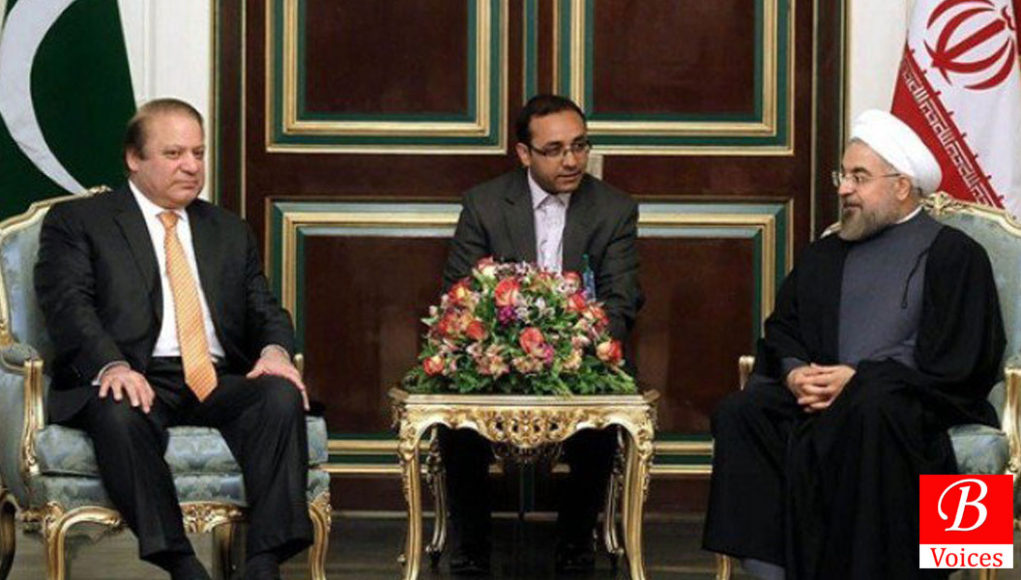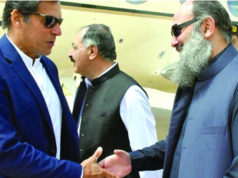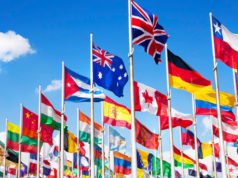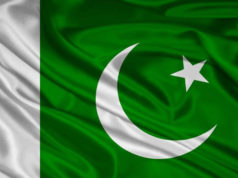Ayaz Ahmed
Napoleon once remarked: “The foreign policy of a country is (largely) determined by its geography.” The geostrategic, geopolitical and geo-economic factors have always played a pivotal role in bringing states together with the intent to maximize their socio-economic and security interests. Similarly, due to their geographical proximity and long-lasting religious, political and cultural affinities, both Pakistan and Iran share a raft of convergent economic interests and are facing the same security challenges in the region.
After the historic Iran nuclear deal, the energy-rich country is projected to rise economically and, therefore, become a commanding military power in the oil-rich Gulf. If Tehran is included in the grand China-Pakistan Economic Corridor (CPEC), this will immensely increase bilateral trade between Pakistan and Iran and enhance meaningful security cooperation between the two countries. More importantly, closer Iran-Pak ties will enormously help Pakistan and China to safeguard CPEC from the disruptive and obstructive designs of India along with the US.
The crushing economic sanctions have obstructed the projected economic growth of Iran and brought about growing imbalance in its trade, sky-rocketing inflation, double-digit unemployment and economic stagnation. In the same way, crippling military sanctions have hindered Iran from modernizing its aging aviation and defense sectors. However, this situation has dramatically changed in the post-sanctions period. After having circumscribed its clandestine nuclear programme, the US, the UNSC and the European Union (EU) have continued to lift economic sanctions on Iran.
In the post-sanctions period, Iran has received its frozen money and is surrounded by a slew of economic opportunities to revivify its economy while increasing its military footprint in the region. On the other side, Pakistan’s economy has started growing due to over $50 billion investment by China in its rail and road infrastructure, energy sector etc. Pakistan, too, has the seventh-largest and one of the most professional armies in the world. The indigenous production of sophisticated aircraft such as JF-17 Thunders and Al-Khalid tanks in collaboration with China have greatly added to the military power of Pakistan. Now, this is the opportune time for Tehran and Islamabad to cultivate and foster robust economic and defense ties.
After the establishment of Pakistan, Iran was not only the first state that extended recognition to sovereign Pakistan, Shah of Iran was also the first head of state who came on a state visit to Pakistan in March 1950. This visit of the Shah was precipitated by the May 1949 visit of Pakistan’s Prime Minister Liaquat Ali Khan to Iran. To further solidify their relations Prime Minister Liaquat Ali Khan and the Shah of Iran concluded a treaty of friendship in May 1950. To boost economic ties, both the countries granted the Most Favorite Nation (MFN) status to each other for trade purposes; the Shah also offered Iranian oil and gas to Pakistan on generous terms. The MFN status tremendously helped Pakistan and Iran in increasing the level of bilateral trade because a significant number of economic barriers such as tariffs and restrictions were eased.
Bilateral relations further cemented when both countries jumped into the American security bandwagon by joining the Central Treaty Organization (CENTO). According to some noted historians of the region, Pakistan joined this organization due to the insistence of Iran. In his book “The Frontiers of Pakistan,” Iranian scholar Dr. Mujtaba Razvi noted that Pakistan would not have joined CENTO, if Iran had not decided to do so. This makes it abundantly clear that Tehran and Islamabad had convergent security objectives in the region, and they were inclined to attain them in collaboration with each other.
For regional connectivity and expansion in trade, along with Turkey, they formed the Regional Cooperation for Development (RCD), which later became a larger group known as the Economic Cooperation Organization (RCD). Though this organization has not made significant economic strides due to lack of interest, it has somehow helped these three nations to come closed to each other in terms of exchanging cultural activities and political and diplomatic supports of one another whenever needed.
Iran extended all-out financial and military assistance to Pakistan whenever the latter badly needed help during wars with belligerent India. Iran played an important role in the Indo-Pak war of 1965 by reportedly providing Pakistan with ninety Sabre jet fighter planes, nurses, medical supplies and a gift of 5,000 tons of petroleum. Again, Tehran played a vital role in Pakistan’s 1971 conflict with India, this time supplying military equipment as well as diplomatic support against India.
The two countries also supported each other in countering insurgent movements across the border. When sophisticated arms and ammunitions had been discovered in the Iraqi embassy in Islamabad, President Zulfikar Ali Bhutto alleged that these weapons were for Baloch rebels in the province of Balochistan. After dismissing the provincial government, President Bhutto launched a rigorous military operation in Balochistan in 1973. Once again Iran came forward and provided Pakistan with military hardware (including thirty Huey cobra attack helicopters), intelligence sharing and $200 million in aid to quell the unfolding insurgency in Balochistan.
Due to Bhutto’s tilt towards the Arab world, the Islamic Revolution in Iran, the Russian invasion of Afghanistan and Pakistan’s support to America against the erstwhile Soviet Union in Afghanistan, the bilateral relations experienced a downward trajectory but the climate of trust continued. Being religious centric, Pakistan’s military ruler Zia-ul-Haq declared Khomeini a symbol of Islamic resurgence, and sent Foreign Minister Agha Shahi to Tehran on March 10, 1979. Despite enormous pressure from the US and Saudi Arabia to support Iraq in the Iran-Iraq War of 1980-1988 , Pakistan declined and went so far as to provide Iran with financial support and Stinger missiles.
After 1989, the policies of both countries regarding Afghanistan became divergent due to Pakistan’s explicit support to the Taliban in the 1990s. After capturing the city of Mazar-i-Sharif in 1998, the Taliban massacred a large number of Shia, including 11 Iranian diplomat, 35 Iranian truck drivers and an Iranian journalist. This put a drain on Pak-Iran relations because Iran considered the Taliban to have been backed up by Pakistan. This was the time when Iran began resetting its ties with India as an alternative to Pakistan. (To be continued)
Note: This is first part of two part series of articles on this topic.
Disclaimer: Views expressed in this article are those of the author and Balochistan Voices not necessarily agrees with them.
Share your comments!








